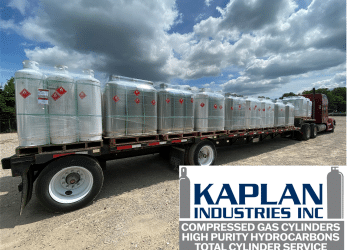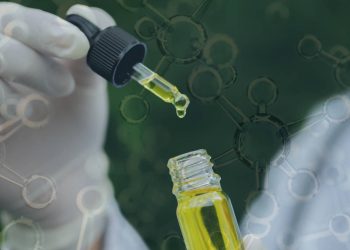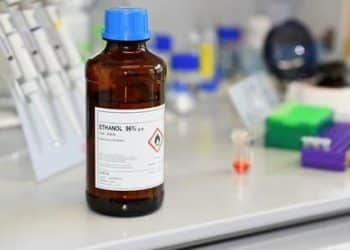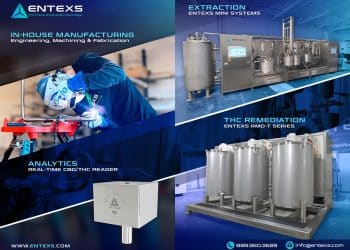Ardent Cannabis was born out of a mother’s 20 year struggle to make consistent, efficient cannabis medicine at home for an ovarian cyst she developed following the birth of her son. Ardent Founder and President, Shanel Lindsay, started researching every single aspect of do-it-yourself cannabis extraction. “I started getting in to the science of it. I was using a crockpot or my oven, and too much cannabis. I also felt like I was getting inconsistent results,” Shanel explained.
The lack of reproducibility of the cannabis experience may be a welcomed, brazen venture into the unknown for those seeking the thrill of the experience itself. But for those who have a renewed quality of life from the effective treatment of their medical conditions, consistency is essential.
Fast forward a bit, and a laboratory opened up in Massachusetts, where Shanel could take her product to be tested. “I found I was still wasting 30-40% of the THC!”, she exclaimed. So, she continued honing her method, and all the while, was commissioning potency tests from the lab. Her goal was to get fully activated THC through decarboxylation of THCA, without damaging the molecule and losing potency. “You really need a very controlled environment,” Shanel discussed. “When following the sous-vide method, the water bath will never be able to get to the right temperature to properly decarb. It’s about 10°F off. Decarbing in an oven has different issues altogether, most notably the lack of even heating.”
What the method really needed was a way to efficiently decarb plant matter at a controllable temperature. This could be all the more paramount in states where growing your own cannabis is not legal, since inefficient decarboxylation means squandered medicine from what might be an expensive feedstock. And what all of Shanel’s efforts led to was the creation of a device, called the Nova Decarboxylator, that perfected the process, based on her 10 years of testing each current methodology.
Shanel’s efforts to help alleviate her symptoms and the symptoms of others like her extended far beyond her diligence in perfecting decarboxylation. As an attorney, Shanel was writing law for the Massachusetts legalization efforts including drafting the initial ballot question that passed, and even of the final law for legalization. Once the law was passed and cannabis was technically legal, dispensaries were not slated to open for four years. With the advent of the new law, though, lots of people wanted to experience how cannabis could help them.
“People did not necessarily understand what decarboxylation was,” Shanel commented. “I saw some people trying to make edibles, and they were burning off all of the THC.” Again, she saw the need to bring her product to market, since no one could actually obtain off-the-shelf, analytically tested products during the beginning years of legalized cannabis in Massachusetts. “I wanted to show people that you can make dispensary-grade products at home,” Shanel added.
The Nova Decarboxylator itself represents the culmination of Shanel’s experimentation. Homogeneous heating is achieved using a silicone heating shell that wraps around the inner container. An algorithm modulates the heat using specially designed heating cycles. The full process takes approximately 90 to 120 minutes, after which the product is immediately useable as an as-is edible, topical, to smoke, to be vaped at the lowest temperature setting on most vaporizers, or to be put back into the Nova for infusion into oil. “We have new data showing that after decarbing the plant material, you can put oil into the machine with the buds, and infuse the oil,” Shanel added.
Starting with 0.5 g cannabis that contained approximately 200 mg of THC in every gram of flower (so 100 mg THC available), the cannabis was decarboxylated. Once finished, oil was added into the Nova. Shanel had the product’s potency tested, the results of which showed that of the 100 mg of THC possible, 93 mg were extracted into the oil. “You can get a lot of oil out of a little bit of decarbed flower. Users can also infuse oil using non-decarboxylated flower if they are looking for high THCA in their products. The oil acts as an insulator, so it prevents decarboxylation,” Shanel offered.
So, now that Shanel had solved the complexities of replicating the decarboxylation process in an easy-to-use consumer device, she set her sights on cultivating another innovation – consumables. “We’ve been developing about fifteen customized botanical wellness formulations”, she explained. “We have capsules that are partitioned and filled on one side with the formulation, which can be an immunity booster, or specific to women’s or men’s health, etc. We’ve even got a caramel apple kit.”
And yes…there is more. Next year will bring a new addition into Shanel’s portfolio as she unveils a larger model of the Nova for commercial use. Our conversation concluded by discussing ways in which the greater percentage of cannabis consumers not immersed in cannabis science can insulate themselves from the ululant cry of snake oil purveyors. “The science does not lie,” Shanel advised. “Ask to see a lab test. Without that, everything else is just conjecture.”












